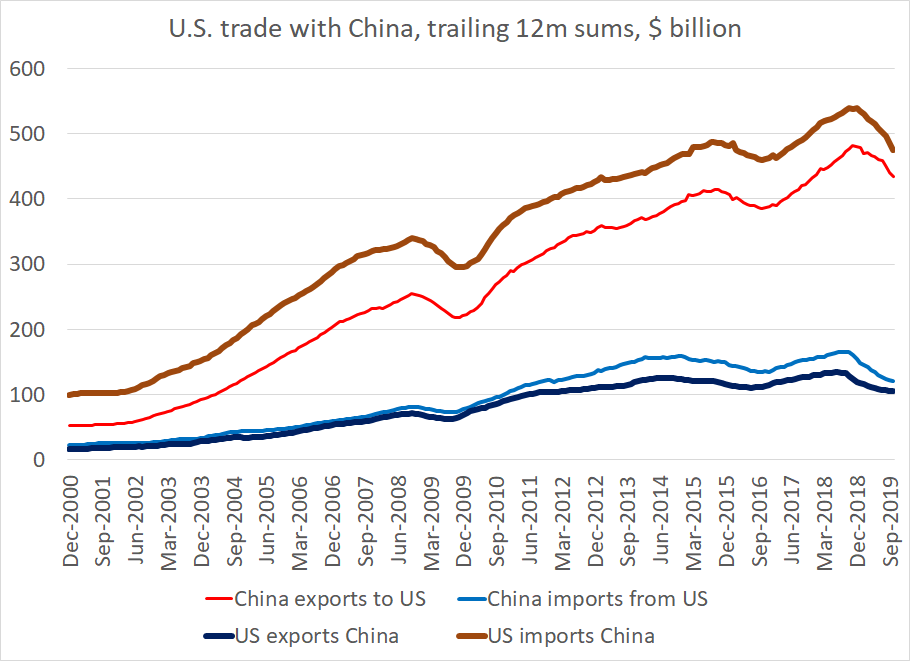The tariffs have had the (desired) impact on bilateral US trade with China. The bilateral deficit is down $50b YTD.
And with (goods) imports down 23% in October while exports (goods) "only" down 3%, the decline in the bilateral deficit is accelerating ...
1/x
And with (goods) imports down 23% in October while exports (goods) "only" down 3%, the decline in the bilateral deficit is accelerating ...
1/x
The last round of 15% tariffs is having an impact -- the pace of the fall in US imports has picked up since September (Chinese data shows the same thing)
2/x
2/x
The modest y/y fall in exports is deceptive. China imported no soybeans last fall, so the base is low -- and China is now buying a few beans and more pork.
Falls elsewhere has offset the better ag numbers.
(chart below uses Chinese data)
3/x
Falls elsewhere has offset the better ag numbers.
(chart below uses Chinese data)
3/x
If you look at overall data the striking thing is the fall in consumer goods imports: real consumer goods imports were down 7% y/y in October. That& #39;s likely an inflated base (beat the tariffs last year) + last round of tariffs.
(auto imports weak b/c of GM strike too)
4/x
(auto imports weak b/c of GM strike too)
4/x
Impact of last round tariffs + weak capex (less drilling + uncertainty impact on business capex) = smaller overall trade deficit even with weak exports ...
5/x
5/x
with overall imports down, evidence of trade diversion is limited --
It is there for Taiwan, and Vietnam (still buried in the monthly bilateral data tho, BEA needs to fix that). But not so much elsewhere. Imports from the EA are 7% so a bit above NGDP but only a bit.
6/x
It is there for Taiwan, and Vietnam (still buried in the monthly bilateral data tho, BEA needs to fix that). But not so much elsewhere. Imports from the EA are 7% so a bit above NGDP but only a bit.
6/x
and with Mexico, auto sector weakness has overwhelmed any trade diversion. Import growth from Mexico remains weak (especially given the weakness in the peso)
7/x
7/x
Bottom line: tariffs clearly changing patterns of bilateral trade. And if you hike tariffs enough, the associated fiscal tightening (plus some short-term drag from uncertainty) should impact overall trade balance.
underlying data is here:
https://www.bea.gov/news/2019/us-international-trade-goods-and-services-october-2019">https://www.bea.gov/news/2019...
underlying data is here:
https://www.bea.gov/news/2019/us-international-trade-goods-and-services-october-2019">https://www.bea.gov/news/2019...

 Read on Twitter
Read on Twitter




